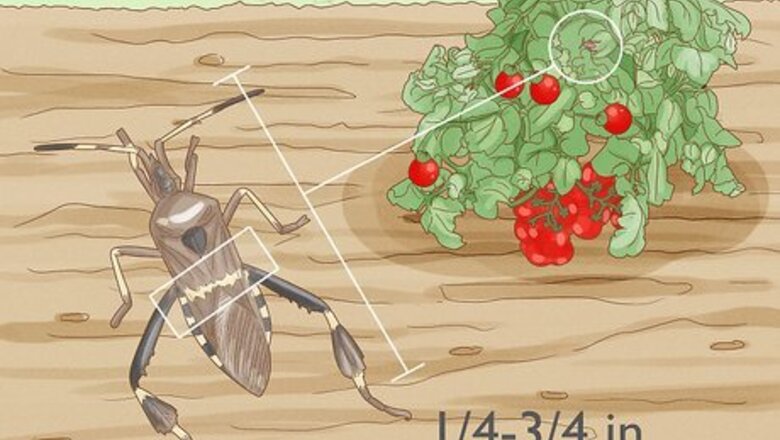
views
Identifying Leaf-Footed Bugs

Look for dark bugs with a white stripe across their wings. You’ll primarily find leaf-footed bugs on plants like apples, beans, peppers, berries, tomatoes, and other fruits and vegetables. Check your plants for bugs that are around ⁄4–⁄4 in (0.64–1.91 cm) long. If they’re leaf-footed bugs, they’ll have narrow brown or black bodies and have a single white zigzag running across the back of their wings. They may also have a line of white dots along the outer edges of their wings on the sides of their bodies Some leaf-footed bugs also have a pair of yellow dots behind the head or a sharp point extending from the head.
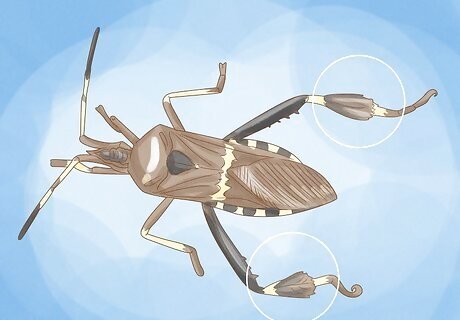
Check for leaf-shaped bumps on the bug’s back legs. You’ll find this unique leaf shape on the bottom half of the bug’s back legs. Their legs widen out into a large leaf-shaped fan that should be really easy to spot on an adult leaf-footed bug. Leaf-footed bugs look similar to beneficial assassin bugs. Check for a leaf-shaped fan on the bug’s back legs to ensure you’re really dealing with leaf-footed bugs.
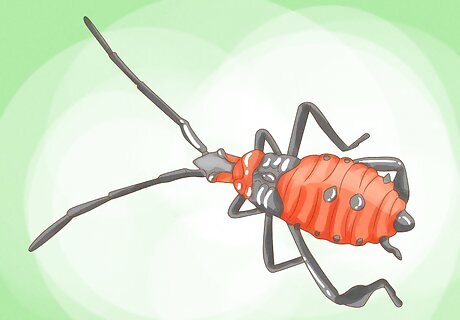
Look for leaf-footed bug nymphs with reddish-orange bodies. Young leaf-footed bugs have a similar body shape as adults, but they haven’t completely darkened in color or grown wings. Look for smaller groups of nymphs that have dark heads with orange or reddish bodies. The young bugs grow into adults about 5 weeks after hatching.
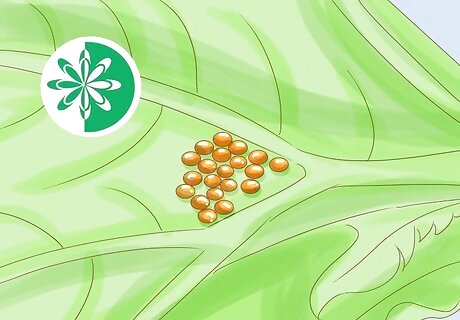
Watch for strands of leaf-footed bug eggs on leaves in the spring. Adult leaf-footed bugs move onto plants in spring and begin laying eggs on twigs or along the veins of leaves. Check your plants in the spring for a line of 20 small golden-brown eggs all connected together. Leaf-footed bugs usually lay eggs in the first 2 months of spring. Leaf-footed bug eggs hatch in 1 week, so keep a close eye on your plants during this time.

Check plants for discoloration, soft spots, and weak growths. Since leaf-footed bugs stab into the fruit with their long mouths, they leave behind small holes that could turn into yellow or black spots. When they attack newly-forming fruit, the fruit may weaken and fall off the plants. If you have leaf-footed bugs on pomegranates, you may not notice any external damage but the seeds will have a darker color and won’t be as flavorful. Leaf-footed bugs also leave behind dirt-like black excrement that can coat the surface of the fruit and make it unappetizing.
Removing Leaf-Footed Bugs by Hand

Start inspecting your plants daily in the spring. Leaf-footed bugs don’t waste any time moving from warm winter shelters out to your plants, so start looking for them as soon as temperatures warm up. Try to check your plants at least once every day or two to make sure leaf-footed bugs haven’t gotten to them. Starting early allows you to make quick work of any eggs and young bugs before they spread further.
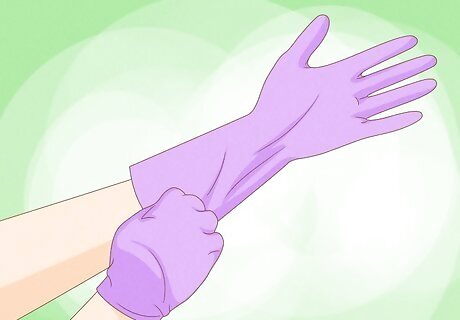
Wear gardening gloves to protect your hands. Leaf-footed bugs are related to stink bugs, so they’ll leave an unpleasant odor on your hands. Always wear a good pair of gardening gloves so you can pick the bugs off without dealing with the smell.
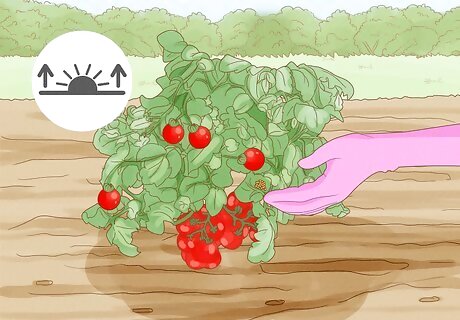
Search for leaf-footed bugs and eggs on your plants in the morning. Leaf-footed bugs are less likely to fly away when you look for them in the morning. Start with the dense clusters of leaves on your plants. Grasp the leaves and gently pull them aside to inspect them. You may see the leaf-footed bugs scurry deeper into the foliage or try flying away. Make sure you also examine any fruit clusters as your plants grow throughout the season. Remember to look for the rope-like eggs underneath the leaves and along twigs.
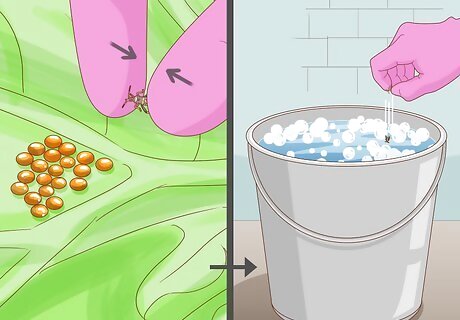
Crush the bugs and eggs before dropping them into soapy water. When you find a leaf-footed bug or cluster of eggs, simply pick them up and squash them between your fingers. To ensure you killed the bugs, drop the bugs in a bucket filled with warm water and 1 tablespoon (15 ml) of dish soap to kill them. You may also knock the bugs onto the ground by shaking the stems or branches of the plant. Just make sure you step on the bugs and eggs that fall off right away. You could instead use a handheld vacuum to suck up the bugs. Just be sure to empty it when you’re finished.
Controlling Leaf-Footed Bugs

Clear out woodpiles and other winter shelters. In the winter, leaf-footed bugs hide under piles of wood, fruit shells, and any other debris you have left over in your yard. Sweep up any debris near your gardening area and clean up any clutter so the bugs don’t have anywhere to stay. Seal small entrances to your home to prevent leaf-footed bugs from getting inside during the colder winter months. If you have a barn or shed nearby, remove as many hiding spots as possible. Cover any cracks or other openings the bugs can get into.

Remove any weeds near your garden. Weeds are one of the main food sources for leaf-footed bugs, so killing the weeds makes it harder for bugs to survive. Check your yard every couple of days for new weeds breaking through the soil. Pull up the weeds and roots as soon as you see them so leaf-footed bugs stay away. To keep weeds from growing, mow grassy areas when they start looking long. You could instead use a weed killing spray, but it may damage or kill other plants or grasses you’re growing.

Prune infested branches and stems from plants. Whenever you see a branch or stem that has a lot of leaf-footed bugs or nymphs, prune them back to get rid of the bugs. Cut the branch or stem with a pair of pruning shears or a saw to remove excess branches. Leave space between the lowest branches and the ground so the bugs have less of a place to hide. Regular pruning also makes spotting and catching the bugs a lot easier. Remember to wear gloves while you’re pruning since some plants have sap that could irritate your skin.

Encourage beneficial animals in your planting area. Some helpful creatures like wasps, tachinid flies, birds, spiders, and assassin bugs naturally hunt and kill leaf-footed bugs in your garden. When you see any of these animals in your garden, leave them alone to hunt the leaf-footed bugs. Attract birds to your garden with feeders, bird baths, and nesting spaces.
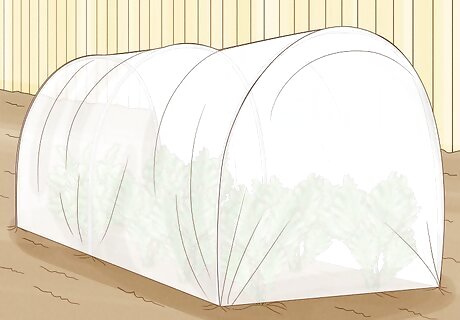
Put row covers over your plants to keep bugs out. Row covers are pieces of fine fabric you spread over plants that let light in but keep bugs out. Protect your plants by installing row covers at the beginning of spring. Leave the covers in place for at least the first 2 months of spring to stop leaf-footed bugs from laying eggs on them. These covers work best for self-pollinating plants such as tomatoes. Row covers also keep out beneficial bugs that pollinate plants, so use them sparingly. Check your plants often for bug infestations. The covers can trap in other pests like aphids if you are not careful.

Plant a trap crop of sunflowers near your garden. Leaf-footed bugs are attracted to large sunflowers for laying their eggs. Plant sunflowers close to your garden and check them every few days in the spring for leaf-footed bugs and their eggs. Squash or kill the bugs and eggs as you find them so they don’t spread onto your fruits and vegetables when they’re fully grown.
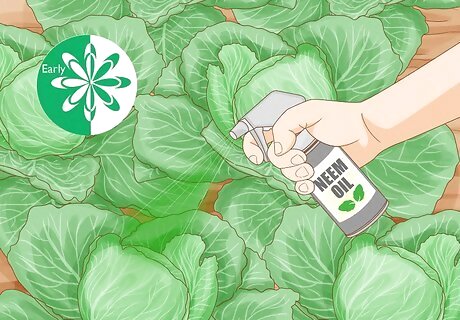
Spray natural insecticides if you have no other choice. You can use natural insecticides, such as insecticidal soap and neem oil on your plants to control infestations of leaf-food bugs. Apply the natural insecticides early in spring, right after the eggs begin to hatch. Insecticides are most potent on the leaf-footed bug nymphs you see clustered on your plants, but they effectively kill adults too. Read the insecticide label for usage instructions and wash any fruit before consuming it. If you have a really serious infestation and other options aren’t working, you can use a chemical pesticide like permethrin to get rid of leaf-footed insects, though the chemicals will harm other beneficial insects in your garden.













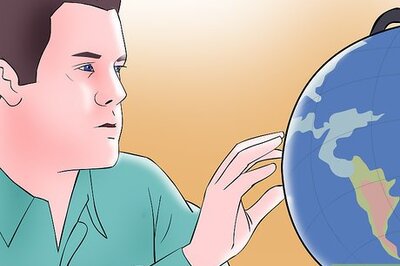




Comments
0 comment